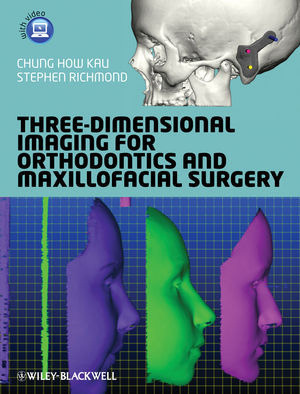
Three-Dimensional Imaging for Orthodontics and Maxillofacial Surgery - Kau

Descripción
Descripción completa de: Three-Dimensional Imaging for Orthodontics and Maxillofacial Surgery - Kau
Autor: Chung Kau & Stephen Richmond
Idioma: Inglés
Encuadernación: Tapa dura, 320 páginas
Referencia: 978-1-40516-240-1
Fecha Edición: 1/2010
Description:
Three Dimensional Imaging for Orthodontics and Maxillofacial Surgery centers on the appropriate application of three-dimensional imaging in the various practices related to orthodontic delivery and craniofacial surgery. The book guides the reader through detailed and illustrated examples of three-dimensional patient management in the context of daily practice. Both three-dimensional static and motion analyses are explored. The book also addresses growth, orthodontic treatment and surgical prediction, both static and dynamic and explores the use of morphing and finite element analyses with particular focus on surgical intervention.
A key resource for specialist working in the fields of orthodontics and cranio-maxillofacial surgery.
Key features:
- Applies principles of 3D imaging to orthodontic practice
- Surveys and analyzes current technologies and modalities, relating them to clinical usage
- Companion website with motion images
- Richly illustrated in full color throughout
- Brings together expert contributors for an international perspective
Contents:
PART 1.
1 Introduction.
2 General Principles of Imaging
- two and three-dimensional
- x, y, z coordinate systems
- Image creation
- Image manipulation
- Morphing
- Review of different acquisition systems:.
- Diffraction.
- Interference.
- Digital spacial acquisition
- Surface rendering
- Static and dynamic systems
4 Radiographic imaging
- Computerised tomography
- Magnetic resonance
- Cone beam CT
5 Referencing images
- Registering surface, radiographic and dental model images
- Establishing a reference
- Superimposition
- Reliability and validity of images
6 Legal and ethical considerations related to facial and radiographic imaging.
PART 2.
7 Diagnosis and treatment planning of dento-alveolor problems
- Hard tissue e.g. impacted teeth
- Soft tissue e.g. cysts, pathology
8 Diagnosis of treatment planning of cranio-facial anomalies
- Establishing deviation from normal – facial norms and facial templates
- Planning hard and soft tissue changes
- Surgical aids
- Achieving the surgical goals
- Establishing ideal dental and facial aesthetics
9 Dynamic changes during function
- Monitoring changes during function
- Mastication
- Speech
- Dental cast – orthodontic care
- Facial change – surgical intervention
11 Professional and patient centered evaluations
- Professional view of dental and facial aesthetics
- Patient view of dental and facial aesthetics
PART 3.
12 Evaluating facial growth
- Gender differences
- Racial differences
13 Prediction of growth and surgical changes.
14 Topographical and volume assessment
- Factors affecting comparisons
- Factors affecting change
15 Virtual reality
- Recognition and displays
- Presentation
- Diagnostic systems
- Computer assisted surgery
16 Using facial parameters for automatic facial recognition for use in identifying medical conditions and facial anomalies.
17 Three-dimensional developments for the future.
18 Summary, quick review guide
Puedes encontrar este libro tambien en las siguientes categorías

































Valoración: